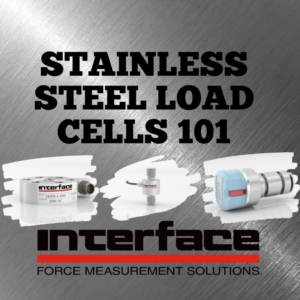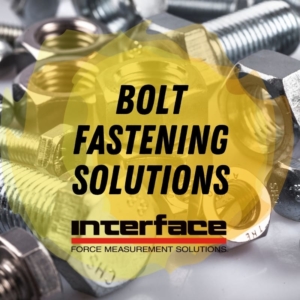Stainless Steel Load Cells 101
Different materials are used in designing and building force sensing products based on the environmental conditions. The choice of materials is important when considering specifications, test and measurement environment, and use case. One of the best metals for keeping environmental factors away from the electronics of a load cell is stainless steel.
The three main metals used in making load cells and other force sensing products is aluminum, steel, and stainless steel. The output signal performance for stainless steel load cells is in the middle of steel and aluminum standards.
The main benefit of stainless steel is the fact it is the best material to use in a corrosive environment because of the metal’s environmental resistance properties. The downside to stainless steel is that it is a bit more difficult to machine; however, it does only require a simple heat treatment process. It is also the most expensive metal of the three and has the highest hysteresis.
Why choose stainless steel over the more cost-effective steel and aluminum options, especially when it is not the strongest or provide the best signal output? Interface recommends stainless steel when the user needs to collect data from a load cell in a hazardous environment or under harsh conditions.
Interface offers stainless steel sensors as part of our hermetically sealed ruggedized load cell product lines. We make stainless steel load cells of all sizes and capacities, including stainless steel miniature load cells, load washers, and customized load pins. Using stainless steel not only keeps users safe, but it also allows for high-quality, accuracy and reliability in extreme environments.
These specialized load cells and force measurement solutions are designed and manufactured so that our products are safe for use in hazardous gas and dust environments when installed per applicable installation instructions. These components play an integral role in the safety of those working in dangerous environments in particular industries like oil and gas, mining, aerospace, automotive and more.
Some of our stainless-steel load cell options include:
- 2400 Standard Stainless Steel High-Capacity Load Cell
- 2400 Standard Stainless Steel Low-Capacity Load Cell
- 2404 Standard Stainless Steel 2-Wire Amplified Load Cell
- 3200 Precision Stainless Steel Load Cell
- 3201 Precision Stainless Steel Compression Only Load Cell
- LBM Compression Load Button Load Cell
- LBMU Ultra Precision Compression Load Button Load Cell
- WMC Sealed High-Capacity Stainless Steel Miniature Load Cell
- WSSCLC Stainless Steel Low Profile Compression Load Cell
- LWCF Clamping Force Load Cell
- LP Stainless Steel Load Pin
- WTSLP Wireless Stainless Steel Load Pin
- WSSB Welded Stainless Steel Ip68 Environment Protected S-Beam
To help keep individuals and workplaces safe, manufacturers create tools and equipment that are protected from the elements in these environments and will not expose electronics to hazardous environments. Interface’s contribution to this is our ruggedized load cells, many of which are made with stainless steel materials due to its strength in these harsh environments. We also carry a specialized line of intrinsically safe products.
There are hundreds of thousands of engineers and manufacturers that design solutions for or work in hazardous environments. Whether its operating inside of facilities with large machines with intricate moving parts, working hundreds of feet in the air repairing a bridge, or deep within a mine shaft, these professionals put themselves in danger every day by the nature of their work. The solutions they use to measure force must provide the type of specifications that are suited for these types of conditions.
To learn more about these products, join the conversation Ruggedized Solutions for Test & Measurement, where we discuss:
- Defining Ruggedized
- Environmental Stresses and Harsh Condition Categories
- Standards and Ratings
- Structural and Material Options
- Ruggedized Test and Measurement Devices
- Sealed Products and Enclosures
- Extreme Temperatures and Cycling
- Exposure to Moisture and Submersibles
- Test and Measurement Applications Using Ruggedized Products
- Do’s + Don’ts
- FAQs
This is a live event that takes place Tuesday, November 15, 2022. To register or get a copy of the recorded event, go here.



